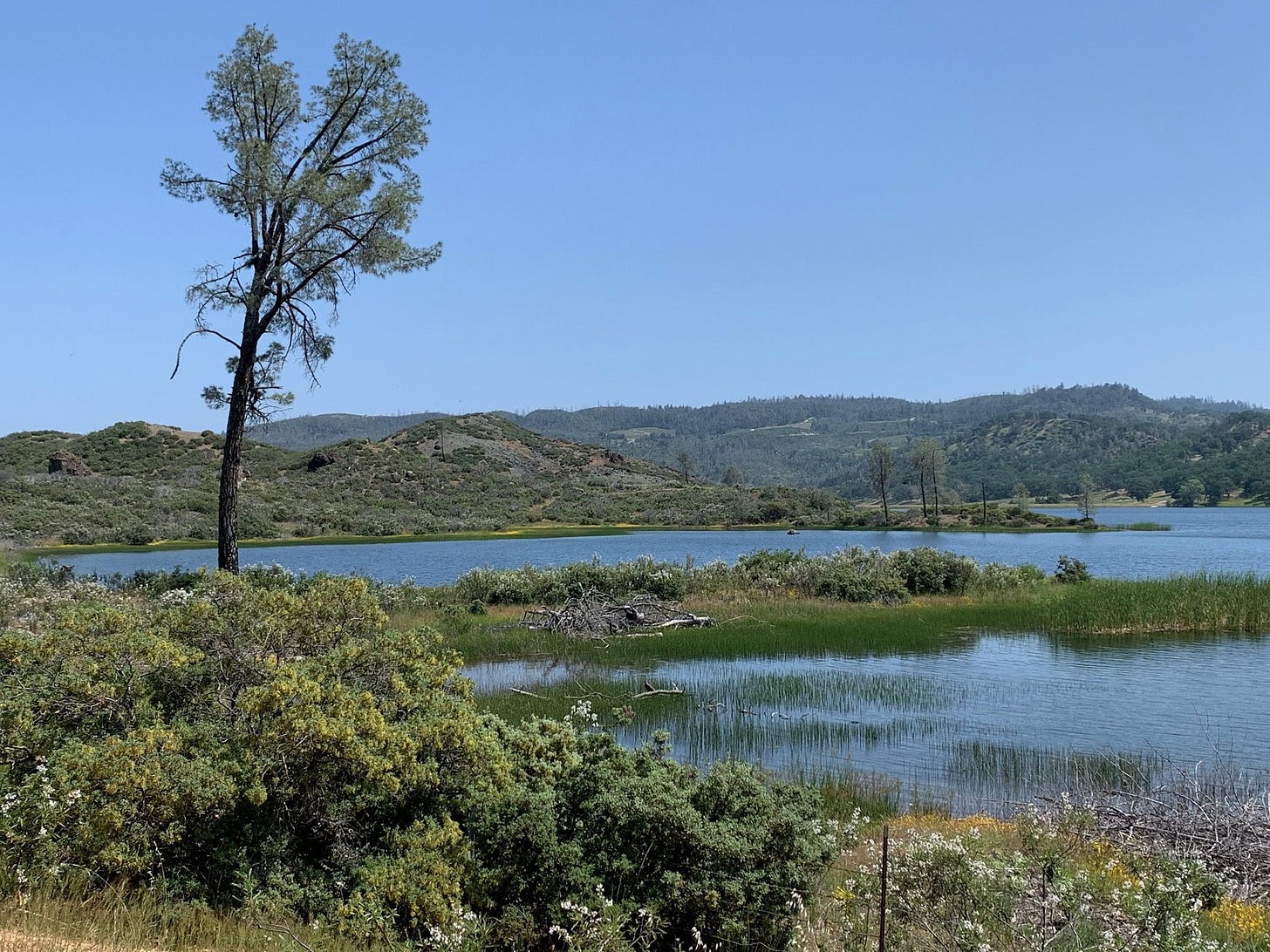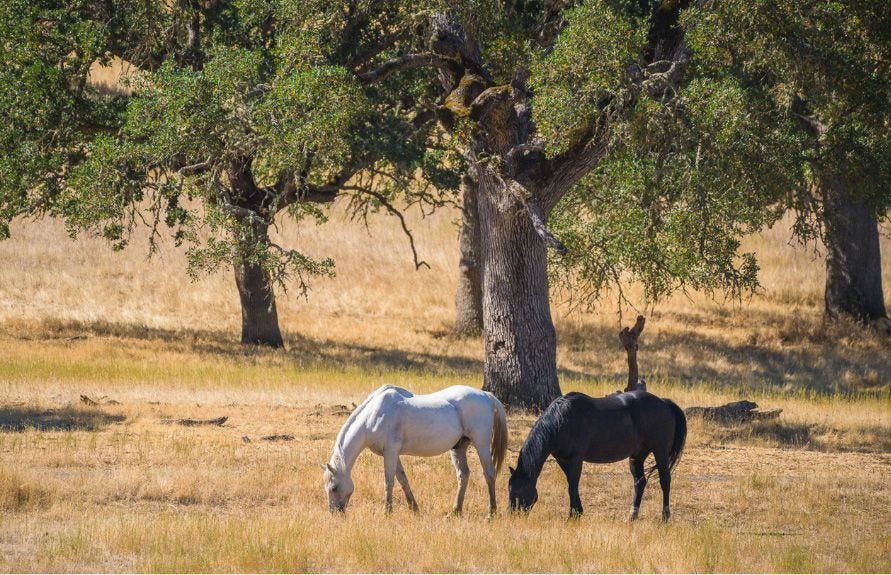A lawsuit filed by two environmental groups seeks to stop a massive, 16,000-acre ultraluxury resort and residential development in the Guenoc Valley that straddles Lake and Napa counties.
Attorney Peter Broderick, who represents the Center for Biological Diversity, said, “We’ve long opposed this type of harmful sprawl development into the wildland urban interface in undeveloped areas, and that’s exactly what this project represents.”
He emphasized how dangerous the project is for wildfires and the community, adding the development will “dramatically increase the risk of additional fires” in an area that has burned repeatedly in the last 50 years.
“I haven’t seen anything yet that suggests the developers are going to do what they need to do to take this threat seriously,” Broderick said.
What happens to this project will impact both Lake and Napa counties in positive and negative ways. On one hand there will be more jobs for hundreds of workers, including in the construction and hospitality industries. It will provide an economic boost for Lake County, and more customers will visit Napa County on the way to this isolated resort. The negative impacts include increased water use, difficult evacuations from wildfires by putting thousands more people in that area and increased traffic on narrow two-lane roads.
Even eight years after the destructive Valley Fire, people still remember the terror of evacuating on two-lane Highway 29, which was jammed with vehicles as the raging fire approached. Days after that September 2015 wildland fire, which started on Cobb Mountain and burned 76,067 acres in Lake, Napa and Sonoma counties, burned cars and pickups were parked on the side of the road where the fire had spread so rapidly.
In those five years, from 2015 to 2020, five wildland fires swept through the area, including in Napa County. Those fires destroyed more than 11,000 structures, burned through nearly 600,000 acres and killed 38 people. Besides Valley, those fires included Tubbs and Atlas, both in October 2017; LNU Lightning Complex in August 2020; and the Glass Fire in September 2020.
Project controversial
The Maha Guenoc Valley Mixed-Use Planned Development Project is controversial. After the Lake County Board of Supervisors approved it in July 2020, Broderick filed the lawsuit and the case went to trial. The judge ruled the county had failed to adequately address the project’s impacts, particularly regarding wildfire evacuation and safety under the California Environmental Quality Act. He ordered the county to rescind its approvals.

The judge ruled against the Center for Biological Diversity and the California Native Plant Society on a couple of issues, including the project’s greenhouse gas emissions and its water supply analysis. Broderick said they appealed the judge’s ruling and it is before the California Court of Appeals. It is unknown when a decision will be made.
“The Court of Appeals works on its own time frame right now,” Broderick said.
The project site is home to and habitat for a number of rare plants and animal species, Broderick said.
“The Environmental Impact Report for the project didn’t really analyze the results from the negative impacts of cutting down or paving over thousands of acres of this important habitat,” he added.
Application expected
Currently there is no application for the project, proposed by Lotusland Investments Holdings Inc. Mireya Turner, director of Lake County’s Community Development Department, said the project is “back to square one” after the approvals were rescinded. The new application is expected to include a revised Environmental Impact Report, a General Plan amendment and request to rezone the land from agricultural to resort/residential.
“We heard it was coming, and we were expecting it either last month or this month,” Turner said in late May.
“We are in the middle of preparing our CEQA document for recirculation as per the Circuit Court judge’s instructions,” said development partner Chris Meredith. “As to the timing, we are getting close, but I would prefer not to put a date on it, other than to say this summer.”

The ultraluxury project is massive and, according to the former EIR, will include up to 400 hotel rooms, 450 resort residential units, 1,400 residential estates and 500 workforce co-housing units on a separate 12.75-acre site in Middletown. The five-phase project will include five boutique hotels, restaurants, residential homes, commercial and retail businesses and resort amenities, including an outdoor entertainment area, spa and wellness facilities, an equestrian area, polo field and golf course.
Shared history
Napa and Lake counties have a shared history. For the first 11 years of California’s statehood, from 1850 to 1861, there was just Napa County. Lake County was created by changing boundaries in Napa, Mendocino and Solano counties.
A historical marker on Butts Canyon Road in the center of the Guenoc Valley notes the road was the first into Lake County in 1850. It was used as an emigration route by the U.S. Army in 1854, and Lake and Napa counties built the road between 1860 and1862. The 21,000 acres that are part of the Guenoc Valley AVA were originally part of a Spanish land grant. In 1888 Lillie Langtry, a famed British stage actress, bought part of the land, planted grapevines and made claret wine. In the early 1900s she was recognized as one of the region’s more successful wine producers.
Project update set
During a recent conversation, Meredith would not comment on the lawsuit because of the private nature of their discussions.
“I am, however, hopeful, based on the discussions to date, that an agreement can be made in the short term with both parties,” he said.

Broderick disagrees with Meredith.
“They reached out to us,” he said, “but I would use a stronger word than premature to describe any conversations we’re having with them. We don’t have a settlement agreement with them.”
Meredith is scheduled to give a project update to the Middletown Area Town Hall group at 7 p.m., Thursday, July 13, in the Middletown Community Meeting Room, located in the Middletown Senior Center and library complex, 21256 Washington St.
When asked whether MATH had ever taken a stand on the project, MATH chair Monica Rosenthal said she doesn’t recall the group taking a formal position on this project. And since there is no current project application, MATH has neither reviewed it nor taken a position.
“To date, I can say that Middletown Community Area residents have expressed both excitement about the project and concern about the project,” Rosenthal wrote in an email. “Many foresee positive impacts, but just as many are concerned about negative impacts, particularly water, traffic and road conditions. Without an actual application and complete project description, MATH cannot fairly and adequately take a stand on this project. As MATH chair, I would not support taking a stand on the project until the application and supporting documents are available for review.”
Several attempts to get comments on the development from Dist. 1 Supervisor Moke Simon were unsuccessful, despite a brief conversation on Memorial Day, when he said he would respond. Simon represents Middletown, Hidden Valley Lake, Anderson Springs, Lower Lake and portions of the city of Clearlake.
AG demands changes
In January California Attorney General Rob Bonta demanded changes to the development that addressed both wildfire ignition risks and greenhouse gas impacts. According to a news release, he said the settlement “requires a revised version of the project that has a smaller, higher-density footprint” that will reduce wildfire risks -- both ignition and evacuation -- and additional measures to reduce greenhouse gas emissions, including the installation of solar panels and electric vehicle charging stations at all residential and commercial buildings.
Following Bonta’s settlement, Meredith released a statement that said, “In the years since the Guenoc Valley Project was originally designed and approved, the science and best practices for fire-safe development have advanced. We are pleased to have reached an agreement with the Attorney General that reflects those advances and builds on our shared goal to protect communities and the environment.”
Bonta stated in a news release that the site is “largely designated as a very high fire hazard severity zone and was burned by wildfires” 11 times since 1952, the most recent being 2014, 2015, 2018 and 2020.
The Guenoc Valley development does not include the 500 acres that makes up the Langtry Winery, its visitor center, the historic home of British actress Lille Langtry and some 400 acres of vines.
The original draft EIR, released in February 2020, also included an off-site well property at the intersection of Butts Canyon Road and Highway 29.
According to the project website, the Guenoc Valley Project is “dedicated to preserving open spaces, native plants and habitats through responsible, sustainable development. In partnership with Adrian Zecha, the premier creator of land-inspired, low-impact developments, Guenoc Valley will serve as a model for the future of responsible and sustainable practices for our other projects.”
Besides Zecha, the other founding partners are Jonathan Breene and Alex Xu. Additional project partners include Nacho Figueras, Tom Doak and Howard Backen.
Meredith is a real estate development and investment professional with more than 20 years of global development and investment experience. He is a director at Mahaman and currently oversees the day-to-day management of the Maha Farms development.
Guenoc land history
1845, Spanish land grant of 21,000 acres ceded to George Roch.
1874, David Hudson, a farmer and stockbreeder, built a simple farmhouse in Guenoc Valley that he called The Homestead on 1,500 acres.
The same year, Emilie Charlotte Le Breton married an Irish landowner named Edward Langtry and became Lillie Langtry (1853-1929.)
1882, Lillie Langtry and her lover, Fred Gephard, arrived in the United States.
1888, Langtry paid $82,000 for The Homestead’s 1,500 acres and an adjoining 2,700 acres. Gebhard paid $33,000 for an adjacent 3,800 acres. They visited their land for the first time in May. The Langtry land was planted in vines; Gebhard’s land was home to a race horse breeding farm.
1894, Gebhard sold most of his fillies and colts at San Francisco auction.
1896, Gebhard sold his Guenoc Valley land to Andrew McCreery.
Early 1900s, Langtry recognized as one of the region’s more successful wine producers. She said her claret was the finest in America.
1906, after producing wine for 18 years, Langtry sold her land to George and Lizzie Mastick.
1919, William F. Detert bought both properties, 21,200 acres, and called it Guenoc Ranch.
1929, W.F. Detert died, property was sold to Woodland Farm Corp. and leased to Edward and Joan Foley, who raised prize cattle.
1963, the Magoon family sold their Hawaiian beachfront property to the University of Hawaii. They took control of Guenoc property following a three-way trade between the Magoons, the university and a rancher who owned Guenoc.
Mid-1970, Orville T. Magoon and his brother, Eaton, established Guenoc Estate Vineyards on the 23,000-acre ranch. The Magoons hired the Raymond family from the Napa Valley to develop a 400-acre vineyard and 62,000-square-foot winery.
1980, First wines released from the property, Lillie Langtry’s historic home restored for the first time. It was restored again in 2006.
1989, O.T. Magoon discovered eight vines that were said to be planted in 1888. According to wine writer Dan Berger, they might be Syrah.
2003, Guenoc Ranch property for sale.
2012, Property sold to Bill Foley.
2016, Lotusland Investment Holdings Inc., developer of the Guenoc Valley Project, bought 16,000 acres of the Guenoc Ranch property.
Information on the land’s history is from “The Life of Lillie Langtry, A Piece of Paradise in Guenoc Valley.”







Excellent article...thank you!
As a resident of Pope Valley, the developments around this project are really interesting. There is also a huge-really huge- vineyard development happening on the property.